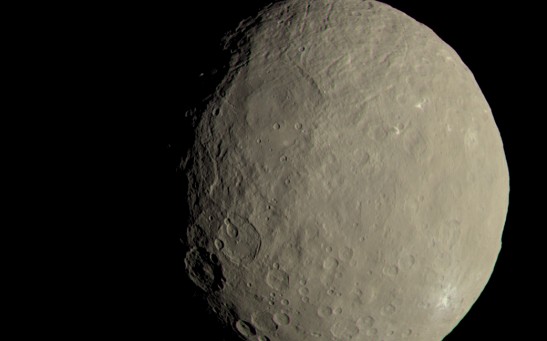Dawn Spacecraft
Tilt History Possible Reason For Ice In Dwarf Planet Ceres
Dawn Space Mission Sends Back More Detailed Images Of Ceres
Space Probe Dawn Takes Detailed Photos Of Ceres
The Question Continues: The Bright Spots on Ceres, What Could They Be?
NASA Releases Best Images Ever of "Alien Lights" on Ceres
NASA Releases New Pictures of Ceres
Are Ceres' Bright Spots Signs of Alien Life? NASA Wants You to Weigh In
Dawn Delivers Images of Ceres' Bright Spots
Dawn Sends Stunning New Pictures of Ceres
NASA’s Dawn Spacecraft Emerges into the Light
Scientists Believe Ceres Might Have A Volcano
VIDEO—NASA’s Satellite Space Fleet Path Patterns Revealed
Dawn Spacecraft Arrives to Ceres—Hear What NASA Has to Say About the Mission
NASA Receives Proposals for More Solar System Exploration
Most Popular

H5N1 Bird Flu Has Spread to Humans With 'Extraordinarily High' Mortality Rate, WHO Warns

Roman Lead Coffin Found To Hold Previously Unknown Human Child Remains in Fascinating Discovery

Pluto's Heart: Massive Ancient Collision May Explain How Dwarf Planet's Unique Heart-Shaped Feature Formed, Scientists Discover

Indestructible Tardigrades Survive Radiation by Ramping Up Production of DNA Repair Genes




![Sat-Nav in Space: Best Route Between Two Worlds Calculated Using 'Knot Theory' [Study]](https://1721181113.rsc.cdn77.org/data/thumbs/full/53194/258/146/50/40/sat-nav-in-space-best-route-between-two-worlds-calculated-using-knot-theory-study.png)

